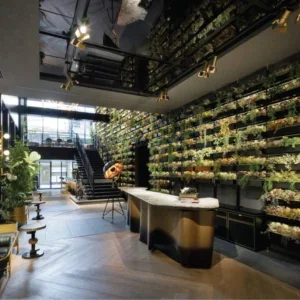Saudi Arabia’s hotel market is developing fast. The kingdom received 17.2 million tourists in 2013, a number that is set to exceed 25.7 million by 2028, according to Business Monitor International. Revenues are up and occupancy rates in Madina, Makkah and Riyadh increased in 2014 compared with the previous year. Jeddah has experienced a large increase in ADR, increasing by 9.2% to $236.88 for November 2014 compared with November 2013, according to STR Global. Many international and GCC (Gulf Cooperation Council, which comprises Bahrain, Kuwait, Oman, Qatar, Saudi Arabia, and UAE) operators are keen to enter this market, but are uncertain of how to guarantee success.
A targeted market
Saudi Arabia differs markedly from its neighbours as a destination. Religious tourism is responsible for approximately 80% of visitor traffic. Some hotels choose to focus solely on this large segment. Dur Hospitality, for example, relaunched its Makarim Hotels Chain as a brand specialising in religious tourism, and invested $400 million in 14 new hospitality projects.
Domestic tourism is the second largest sector. The Saudi population is about 31 million, and a growing number are keen to explore their country. The Saudi Commission of Tourism and Antiquities (SCTA) is working actively to develop domestic tourism within heritage, archaeological and medical tourism.
Saudi Arabia also receives plenty of corporate traffic. The kingdom boasts the GCC’s biggest economy; every major financial institution and the oil and gas industry are present in Riyadh.
Tourist entry is regulated by visa and permits to stay within capacity constraints and to manage health risks from, say, virus-infected countries.
Construction and infrastructure projects are under way in every major city to satisfy demand. According to STR Global, the following cities have more than 2,000 rooms under construction: Makkah (5,936), Riyadh (5,491) and Jeddah (2,728). So how does one become part of this potentially vast market?
International players must take time to build bonds and trust with strong local partners, before detailing any hotel deals. Carlson-Rezidor recently signed a deal with Saudi-based Al Hokair to develop hotels throughout Saudi Arabia, for example, while Marriott International partners Dur Hospitality.
Brands must be able to adapt to local culture. Saudi businesses will assume that communication will be conducted in Arabic, clients will be expected to be mindful of regional customs regarding dress, and, of course, all references to alcohol should be removed.
Hotels must be attractive to Saudi nationals, male and female, as the kingdom seeks to increase employment among the local population in the hospitality sector. Understanding what attracts, motivates and retains employees is key to success.
France’s Accor has worked with SCTA and Antiquities on a training scheme since 2009, aiming to produce the managers of the future.
FHRI Hotels & Resorts recently launched its 2015 annual campaign, which aims to employ more than a 1,000 nationals. In cooperation with Cornell University in New York, it has hopes its staff will become 80% Saudi over the course of the next few years. Other hotels have similar incentive schemes.
Connect with the audience
Finally, guests must be able connect to high-speed Wi-Fi anywhere in a hotel. Saudi Arabia’s 16.5 million internet users represents the largest number of people online in any Middle Eastern nation, and is equivalent to 60% of the population, says Internet World Stats.
The kingdom currently has a low share of international hotel brands within economy and luxury hotel segments. There is a big potential and appetite for growth, with many brands in the process of establishing themselves. With a good understanding of the country’s particular tourism needs, combined with strong respect for local traditions and employees, there is limitless potential for growth.






